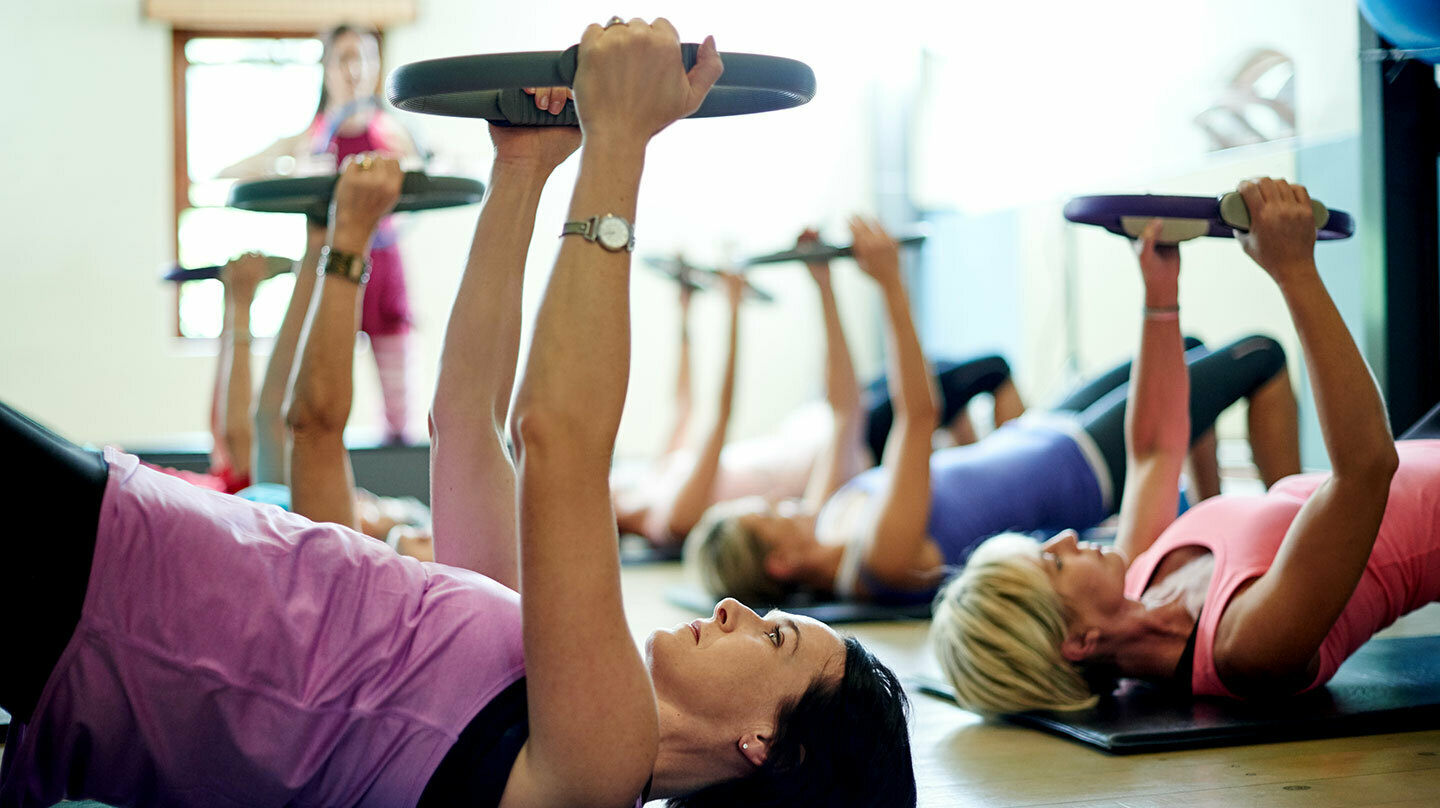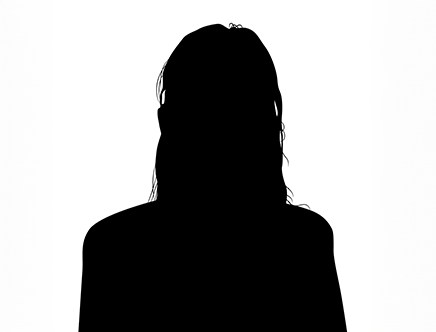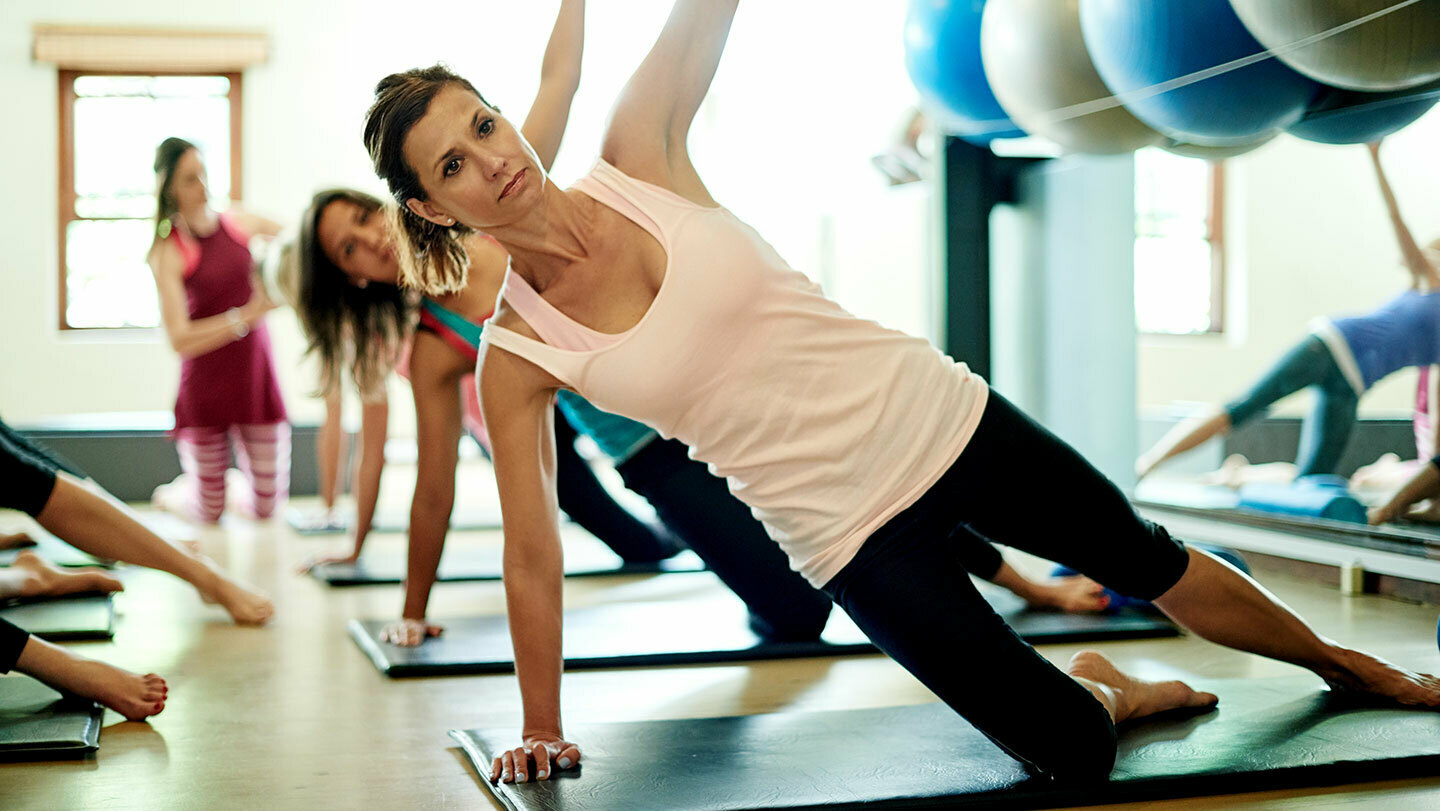Pilates is a body-conditioning technique that strengthens muscles and improves balance and posture. Like yoga, Pilates involves you learning a series of poses and stretches and helps tone and strengthen your muscles; unlike yoga, Pilates does not usually involve meditation and is not an aerobic exercise.
Devised by Joseph Pilates in the 1920s, Pilates aims to teach you how to use your muscles properly to protect and support you, preventing injury and strain. For this reason, Pilates is increasingly popular with people whose work is very physically demanding, from ballerinas to prop forwards to builders.
What to expect from a Pilates session
Pilates helps to increase flexibility, and strengthen the muscles that support bones, so chiropractors, osteopaths, back specialists and physiotherapists recommend Pilates to people who have a recent or persistent injury. Pilates can improve physical strength and fitness in a variety of ways.
It can:
Pilates is particularly good for pregnant women as it can help improve posture and weight-bearing, reducing the risk of injury and pain.
There are two big precautions in terms of Pilates:
Find a qualified teacher: Pilates is great for preventing injury and rehabilitating people who've had injuries. But if the teacher is not qualified, the opposite can be true. Don't put yourself in unqualified hands.
If you do have a back problem, you make sure that your teacher knows about it: what it is, how long it's been going on, any medical information you can. Pilates has become known for helping people with back problems. This can be true, but it is not a one-cure-fits-all.
If you bear these two precautions in mind, you should be on track to reap the benefits of Pilates.

Wear something comfortable that allows you to move freely. If you're taking part in a mat-based class, you'll spend a lot of time on the floor, so you might want to take a clean set of clothes to change into before you leave.
The essence of Pilates is that it works on building your core strength, which is centred around your stomach, firming and building those muscles. From here, you can work out to all the other parts of your body. After general breathing exercises and possibly some light stretches, you will then move to working on your core strength, before going on to particular muscle groups. All the work you do with the teacher is personalised and tailored just for your needs.
One of the special things about Pilates is that it enables you to target even the smallest muscle in very specific ways: got a pain in your leg? Pilates could offer more than 50 exercises to target that pain. Pilates is not aerobic exercise; it is gentle, cautious, and strengthening. A session usually lasts about an hour.
As Pilates is not an aerobic exercise, you will not be sweaty or tired out afterwards as you would after a session of, for example, Ashtanga yoga. Many people say they feel lighter, energised and relaxed after Pilates. You'll be perfectly fit to go back to work or wherever else when you've finished your class.
Pilates usually takes one of three forms:
Studio Pilates involves the use of apparatus to help guide and train you through resistance training exercises. The main piece of equipment is known as the "Reformer". The Reformer is a machine that is roughly the same dimensions as those used for rowing exercises, except the Reformer has a central sliding bed attached to springs. The machines usually have ropes attached to pulleys, which can be pulled by the arms or legs, along with padded head or shoulder rests for comfort. Other equipment such as weights and gym balls may also be used. The class will usually be in a small group of three or four people.
Mat Pilates is a series of floor exercises. The exercises are very similar to those in studio Pilates, but little or no equipment is used. Classes are usually made up of around 10 people.
Pilates classes can also be booked as one-to-one sessions with a teacher.
To get the most out of Pilates, it's important to really understand the underlying concept of what you're trying to do, and to be able to focus on your muscle groups and what you're doing so that the exercises are really effective, for you. Ask lots of questions so that you really know what you're doing.

Summer Spy
11th April 2013
Spy Likes:
Warmth and sunshine; spas which take me away to another country; fruit infused waters; beach-worth pedicures; deep tissue massages.
Spy Dislikes:
High footfalls; treatments that over promise and under deliver; heavy lunches; loungers drapped in used towels.
